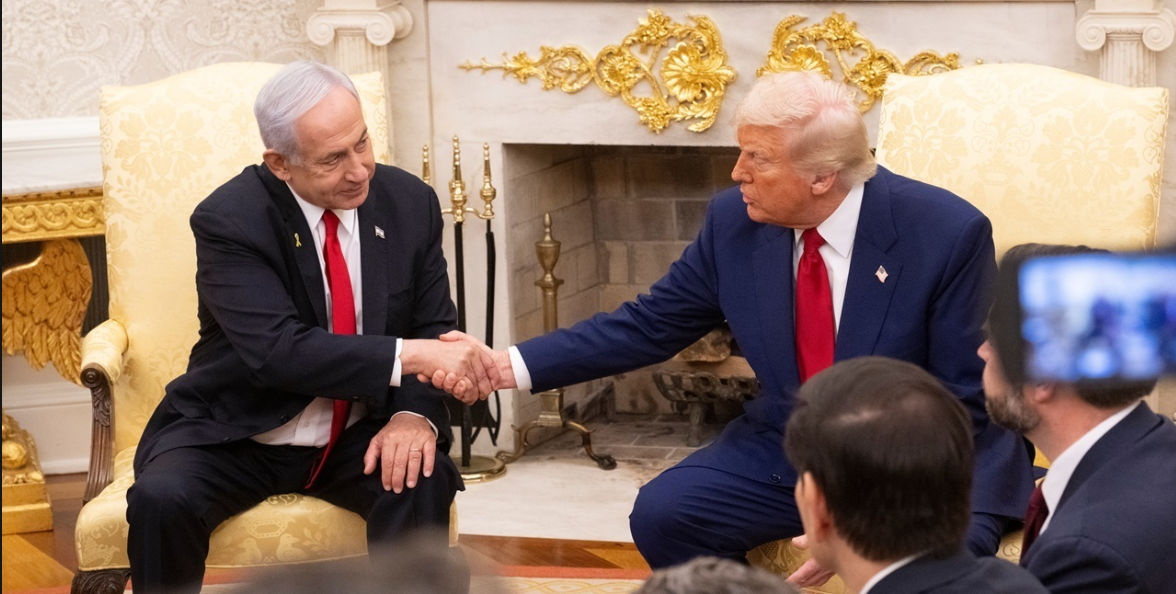The Last Chance for Peace in the Middle East

President Donald Trump’s “Gaza International Transitional Authority” (GITA) plan may be Gaza’s last chance to escape from its cycle of terror—and return to a pathway towards peace and prosperity.
History has called Washington back to its most solemn duty: to be the peacemaker in a region that teeters between renewal and ruin. On Monday, President Donald Trump and Prime Minister Benjamin Netanyahu will meet in the Oval Office to discuss Gaza’s future—and perhaps the last credible chance to save it from endless war.

To my astonishment, many in the Washington establishment still dismiss Trump’s Middle East policy as flawed. How quickly we forget. How easily we erase the obvious.
Let us remind ourselves: With the guidance of his son-in-law Jared Kushner, whose vision proved both bold and unconventional, Trump achieved what no American president before him had ever dared. The Abraham Accords were more than a mere agreement—they were a revolution. They broke walls of mistrust and unlocked corridors of cooperation across the Arab world. Political normalization was matched by the promise of economic transformation. A new dawn had begun.
Then came October 7th. The bloodshed was not born of American policy, nor Israeli resolve. It came from a radical terrorist organization—Hamas—that turned its ideology into carnage, slaughtering innocents. The dream borne of the Abraham Accords stopped in an instant.
What, then, was Israel expected to do? To stand idle? To mourn and move on while the cancer of terrorism metastasized? No. Prime Minister Netanyahu chose to confront not only Hamas, but the deeper threat behind it: Iran’s machinery of terror. In this struggle, America once stood firmly by Israel’s side.
At the UN, Netanyahu reiterated what Israelis know in their bones: Iran is the axis of danger. And the Israeli people, in their vast majority, rally behind him. Amir Ohana, the Speaker of the Knesset, described Netanyahu as “Israel’s Churchill.” The comparison is striking—not because Netanyahu sought it, but because it genuinely captures how many Israelis see him in this moment of trial.
The real question now is: How do we end the war in Gaza and restart the path of peace and prosperity?
This is why Monday’s Oval Office meeting matters. If the Abraham Accords shattered decades of diplomatic inertia, the plan that Trump is bringing forward now—the Gaza International Transitional Authority, or GITA—seeks to do something just as bold: to rescue Gaza from its cycle of terror and place it on a pathway to sustainable peace.
The plan bears the imprint of Jared Kushner’s quiet genius, strengthened by the seasoned expertise of former British Prime Minister Tony Blair. Together, they have sketched out a blueprint that is ambitious, realistic, and rooted in the hard lessons of past failures.
Yet the world must be clear-eyed: the success of this project depends on two indispensable conditions. First, every Israeli hostage still held by Hamas must be freed—a moral and political imperative without which no plan can begin. Second, Hamas itself must be dismantled, so that Gaza is liberated from the grip of a terrorist movement that thrives on destruction. Without these foundations, no transitional authority, however well designed, can deliver peace or stability.
Under the GITA plan, Gaza would then be placed under an interim international administration, led by the United States in partnership with credible Arab, Western, and Palestinian figures. A supervisory council would serve as the supreme political and legal authority, empowered to make binding decisions and guarantee that no faction—certainly not the remnants of Hamas—could hijack the transition. Day-to-day governance would be entrusted to technocratic ministries, staffed by qualified Palestinians chosen for their expertise rather than their factional loyalties, responsible for restoring health, education, welfare, infrastructure, and finance.
Security and justice would be reestablished by a neutral police and judiciary, staffed by vetted professionals with oversight from respected Arab and international jurists. Property rights would be safeguarded so that displaced Gazans are not dispossessed during the transition. At the same time, GITA would coordinate closely with the Palestinian Authority, preparing the ground for an eventual transfer of responsibility once real reforms are in place. And to guarantee stability, a multinational stabilization force would secure the territory, disarm militias, and protect humanitarian operations—all under US leadership and with the legitimacy of a broad coalition.
But beyond institutions and security, we must not forget the human horizon—how the dream can become reality. Here is where Trump’s character as an exceptional entrepreneur matters. Gaza, after its painful moments and the images of mass destruction, can be reborn with a bright new face: towers rising along its coast, modern homes and neighborhoods built for a middle class seeking to live, work, and invest there. The foundation of peace is not only political agreements but opportunity. Instead of tunnels for bombs, we must envision an AI industrial zone that illuminates the minds of Gaza’s youth and places them on the path of innovation, technology, and prosperity.
These ideas are not academic. They are the core of the plan that Trump will place at the center of his conversation with Netanyahu on Monday. It is the plan that can break the deadlock, end the war, and restore the spirit of the Abraham Accords. And it is the plan that the region desperately needs before it is too late.
This is the last chance. For Gaza. For the region. For the idea that Arabs and Jews can live side by side, prospering in peace.
The challenge now falls not only to Israel and the United States. It falls to Arab and Muslim countries. They must choose: stand with progress, with stability, with peace—or perpetuate the deadlock that has condemned generations to blood and despair.
History is unforgiving. This plan may be the last bridge before the abyss. Let us cross it, together.
- Questions and Answers
- Opinion
- Motivational and Inspiring Story
- Technology
- Live and Let live
- Focus
- Geopolitics
- Military-Arms/Equipment
- Ασφάλεια
- Economy
- Beasts of Nations
- Machine Tools-The “Mother Industry”
- Art
- Causes
- Crafts
- Dance
- Drinks
- Film/Movie
- Fitness
- Food
- Παιχνίδια
- Gardening
- Health
- Κεντρική Σελίδα
- Literature
- Music
- Networking
- άλλο
- Party
- Religion
- Shopping
- Sports
- Theater
- Health and Wellness
- News
- Culture

